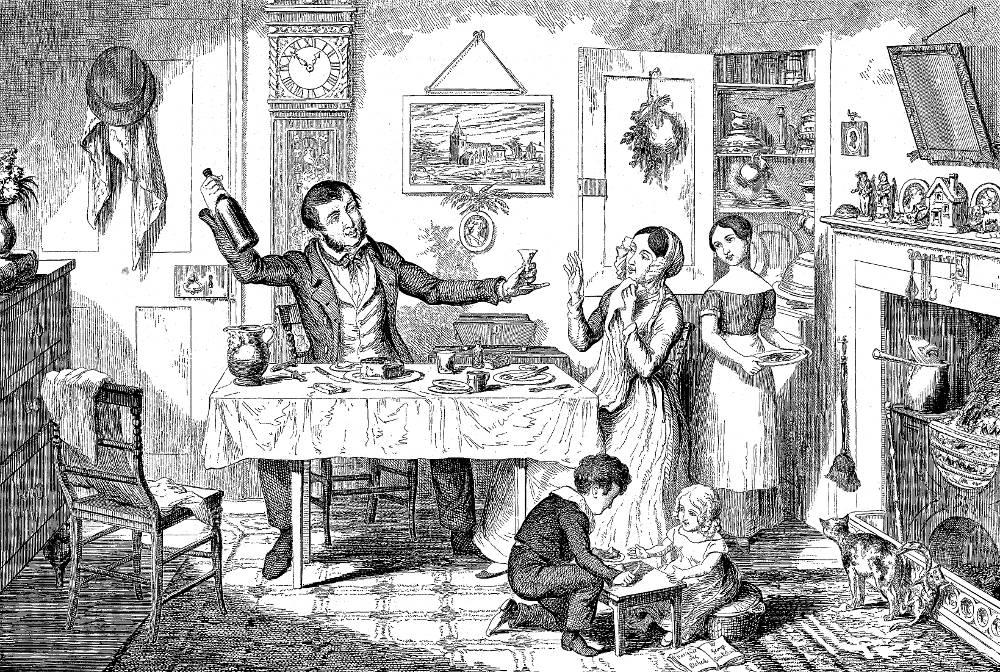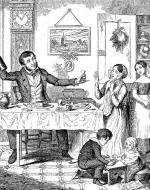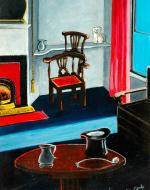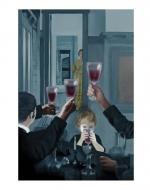Created by Tian Si on Sat, 11/07/2020 - 17:21
Description:
George Cruikshank, "The Bottle is brought out for the first time: The husband induces his wife 'Just to take a drop,'" Plate I in The Bottle, 1847. Scanned image and text by Philip V. Allingham. This series of etchings was reproduced by glyphography by publisher David Bogue, London, so the series of eight plates could be sold for only one shilling (Richard Vogler, George Cruikshank, 159).
During the Victoria era, drinking was such a common behavior that alcoholism became a social problem. "Bottle 1" is the first image of The Bottle, a set of eight images that encouraged people to quit drinking; the artist, George Cruikshank was an alcoholic turned teetotaler (a man against drinking). In this image, the clock tells us it is only noon. However, the man has already started to drink. The family in the picture looks happy--the room is tidy and children play happily together, yet alchohol threatens their peaceful life. In fact, in the following pictures of the series, the family does suffered because of the master's addiction to gin. Akin to the father in Cruikshank's The Bottle, Emily and Anne Brontë include alcoholics in their fiction, arguably inspired by their alcoholic brother, Branwell.
Branwell Brontë's Corner at the 'Black Bull,' Eileen Ganly, 1977, Acrylic on canvas, Brontë Parsonage Museum, Haworth, UK.
The "Black Bull" is a public house in Haworth that Branwell frequently went to; he even had his own corner chair. In this painting, the artist placed Branwell's tankard, hat, and pipe lying in the foreground and his chair in the background. We can assume he often drank alone due to his corner seat.
Valentina Catto, "Arthur is Made a Man," for Anne Bronte, The Tenant of Wildfell Hall, Folio Edition, 2020.
This is an illustration from a 2020 edition of Anne's The Tenant of Wildfell Hall (1847) where the heavy drinking Arthur Huntingdon, arguably inspired by Branwell, and his friends want to make little Arthur a drinker while Helen witnesses the scene behind the door. The artist places Helen and the glasses into the center of the picture--a place that naturally draws our attention; the depth in the image creates a contrast between a small distant Helen and large close-up glasses, indicating Helen's helplessness to save her son. A viewer could easily feel Helen's anger when seeing little Arthur surrounded by drunken men and wine glasses. Arthur's fate anticipates that of the father in Cruikshank's The Bottle.




